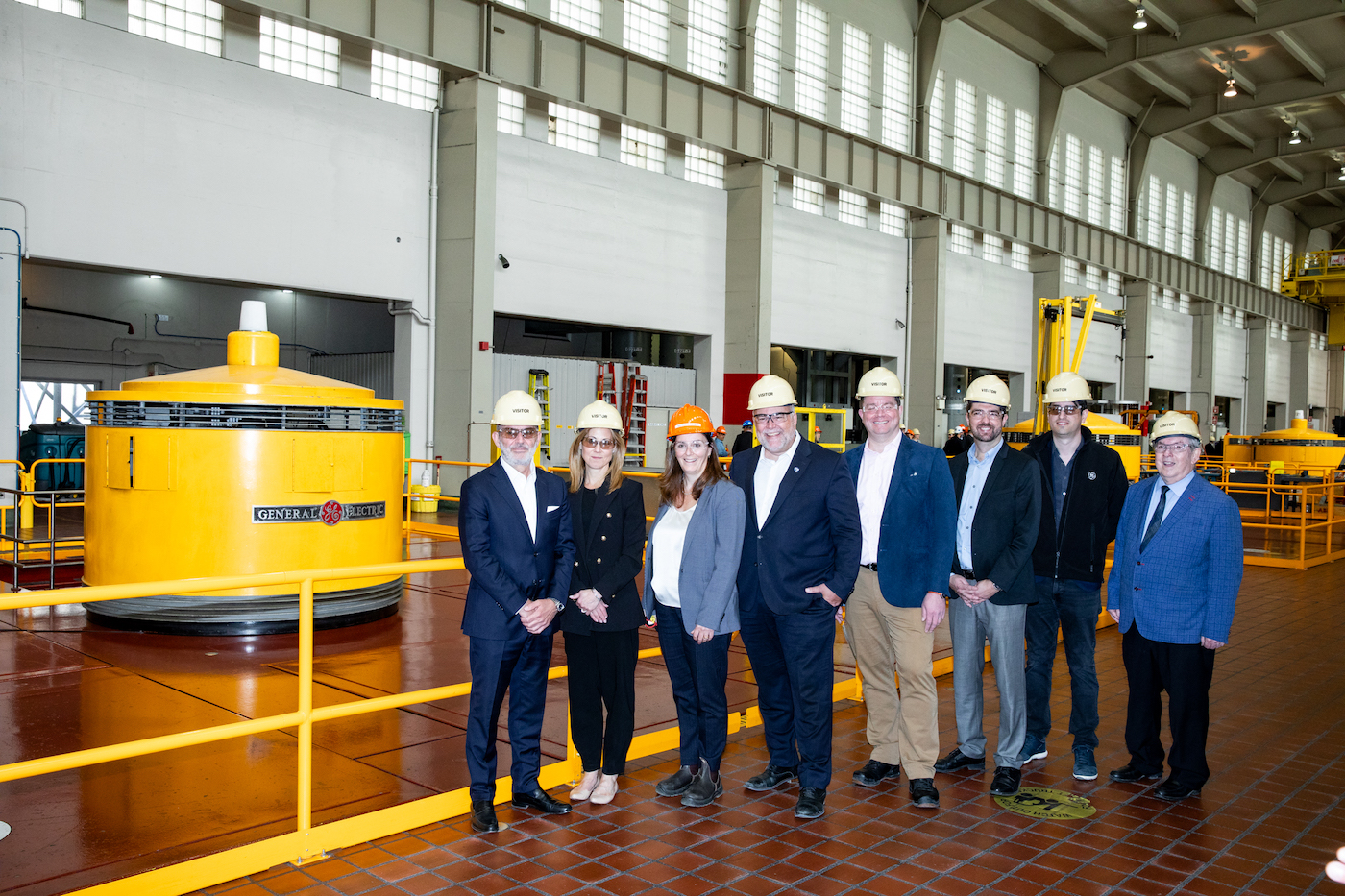The sheer spectacle of Niagara Falls, spanning the border between Ontario, Canada, and New York State, on the U.S. side, has thrilled sightseers for centuries. Nineteenth-century British explorer John Franklin declared the famous waterfalls “first in the world for grandeur,” while civil rights reformer Frederick Douglass was rendered speechless by their “irresistible power.” But the Falls, as they’re known locally, are not just beautiful: The cleaner hydroelectricity generated by them also helps power the economy on both sides of the border.
The iconic waters will remain a driving force behind Ontario’s sustainable economy goals for decades to come, thanks in part to an agreement between Ontario Power Generation (OPG) and GE Vernova to modernize up to five hydropower plants in the Niagara region over the next 15 years. The agreement, which includes the upgrading of the venerable Sir Adam Beck complex, known as the “crown jewel” of OPG’s hydropower fleet, is expected to extend the life of the assets by over 30 years, helping to accelerate Canada’s most populous province toward its net zero goals. OPG, which meets around 50% of Ontario’s power demand from its diverse generation assets, has committed to being a net zero company by 2040.
The upgrade of OPG’s Niagara assets, which generated 13.2 terawatt-hours of power in 2023, equivalent to around 10% of Ontario’s needs, is industry leadership in action, says Frederic Ribieras, CEO of GE Vernova’s Hydro Power business.
“We’re in a capacity-constrained market, with pressure on the industry to execute on many projects,” he explains, referring to the industry consensus that the world needs to almost double today’s installed global hydropower base to between 2,500 gigawatts (GW) and 3,000 GW by 2050 to stay on course for its net zero goals.
While Niagara’s hydropower plays a key role in Ontario’s interlocking decarbonization and industrial strategies, OPG and GE Vernova are collaborating on the other pieces of the net zero jigsaw. They’ve also unveiled agreements to cooperate on the building of North America’s first grid-scale small modular nuclear reactors; to upgrade Darlington Nuclear Generating Station, one of OPG’s existing nuclear power plants; and to boost the efficiency and output of a combined cycle gas plant.
“GE Vernova is hand in glove with OPG and Ontario,” says Heather Chalmers, president of global growth markets at GE Vernova. “We’re a purpose-built energy transition partner that focuses on both electrification and decarbonization, allowing us to be fully aligned with their net zero goals and their industrial growth strategy.”
The agreements build on GE Vernova’s deep roots in Ontario. The company traces its history in the province all the way back to 1892, when the newly formed Canadian General Electric opened an engine plant in Peterborough, the first city in the country to have electric streetlights. Visitors to Niagara Falls can still see the art nouveau–inspired GE logo etched into the brass nameplates adorning the generators in the depths of the Sir Adam Beck complex, which was one of the world’s first large-scale hydropower projects.
“Canada understands the importance of hydropower,” says Chalmers. “It understands that they have to protect it, and they have to grow it in order to meet its net zero commitments.”
Capacity Challenge
Canada might be the poster child for the sustainable hydropower renaissance. There are more than 2 million lakes in the country — 170 times as many as the famously lake-abundant U.S. state of Minnesota. Canada began harnessing those reservoirs as soon as dawn broke on the electrical age: Its Chaudière Falls plant started up in Ottawa in 1892, and it is still generating power for the capital city. Today, Canada’s total installed hydropower capacity is around 85 GW, and the generation source provides more than 60% of the country’s power. That includes pumped storage projects such as the one at Sir Adam Beck, which can dispatch power in line with fluctuating supply and demand on the grid. Canada has two routes to boosting the capacity of its hydropower sector: It can tap its abundant water resources or it can refurbish existing facilities.
This is sorely needed in North America. “While the world is expected to need to double hydropower capacity to stay on course for its net zero goals, the region would need to grow hydropower by a factor of five compared with the previous decade,” says Romain Pellegrino, general manager for North America at GE Vernova’s Hydro Power business.
Governments will need to work collaboratively to boost investment, streamline licensing, and introduce sustainable practice regulations to meet these goals. As they wait for investment and regulatory environments to improve, hydropower operators should waste no time striking long-term partnerships and laying the groundwork for their projects, says Ribieras. “This is expected to give equipment manufacturers the needed visibility to make the investments to scale capabilities, while project developers will secure access to limited resources and be protected against potential supply chain disruptions,” he adds.
That’s exactly what has happened in Ontario. In fact, the close, long-term collaboration between GE Vernova and OPG helped slash the standard procurement phase for the Niagara assets by more than 12 months, while still ensuring that environmental concerns are properly addressed, estimates Pellegrino.
“That gives us more time to spend optimizing the project,” he says. “We’ve established the contractual landscape for procurements, so we can progress straight to the conceptual design and engineering phases.”
People and the planet will be the ultimate beneficiaries of this approach, says Chalmers.
“These are massive infrastructure projects that take many years to deliver. They have to be great, on time, and on budget,” she explains. “We will ensure that we deliver for the people of Ontario and work to create economic value for the province and for Canada.”
